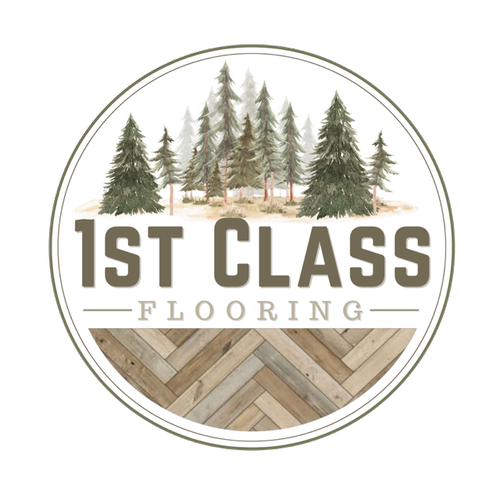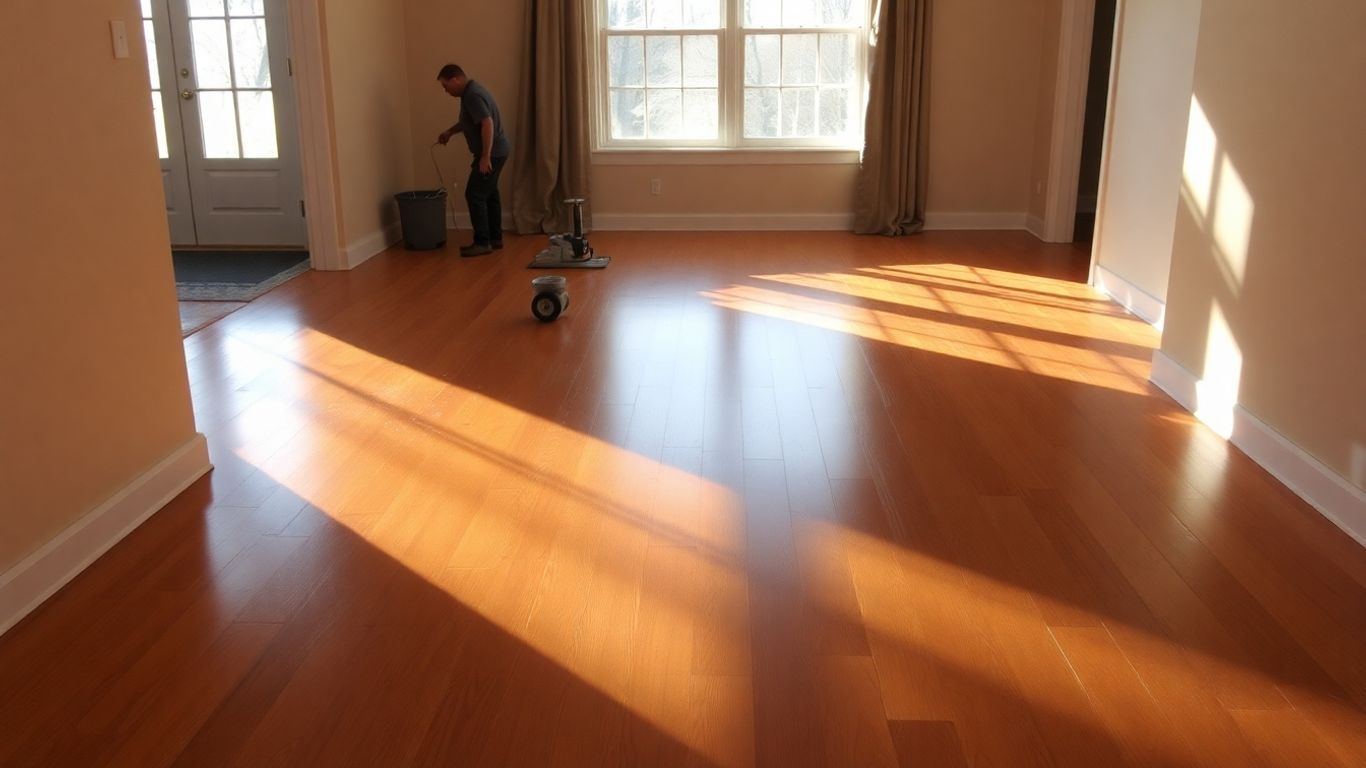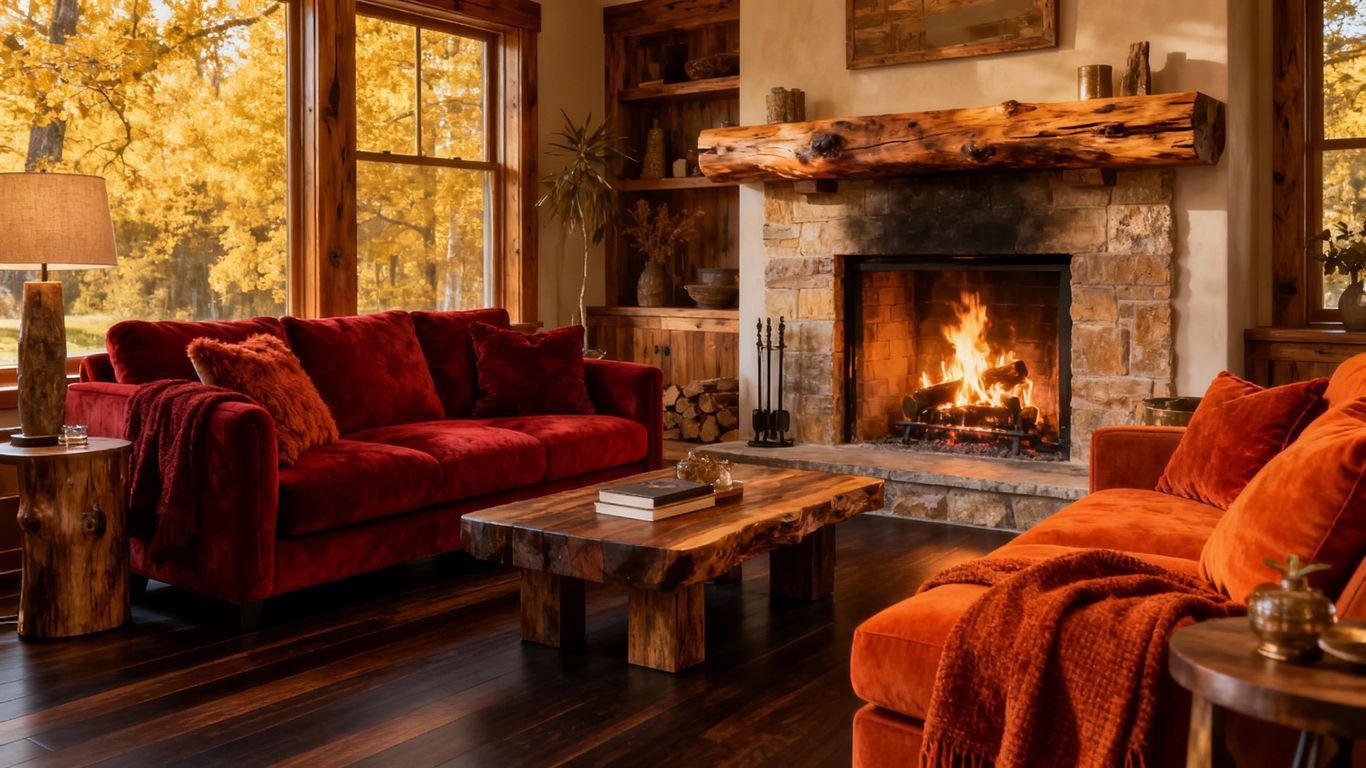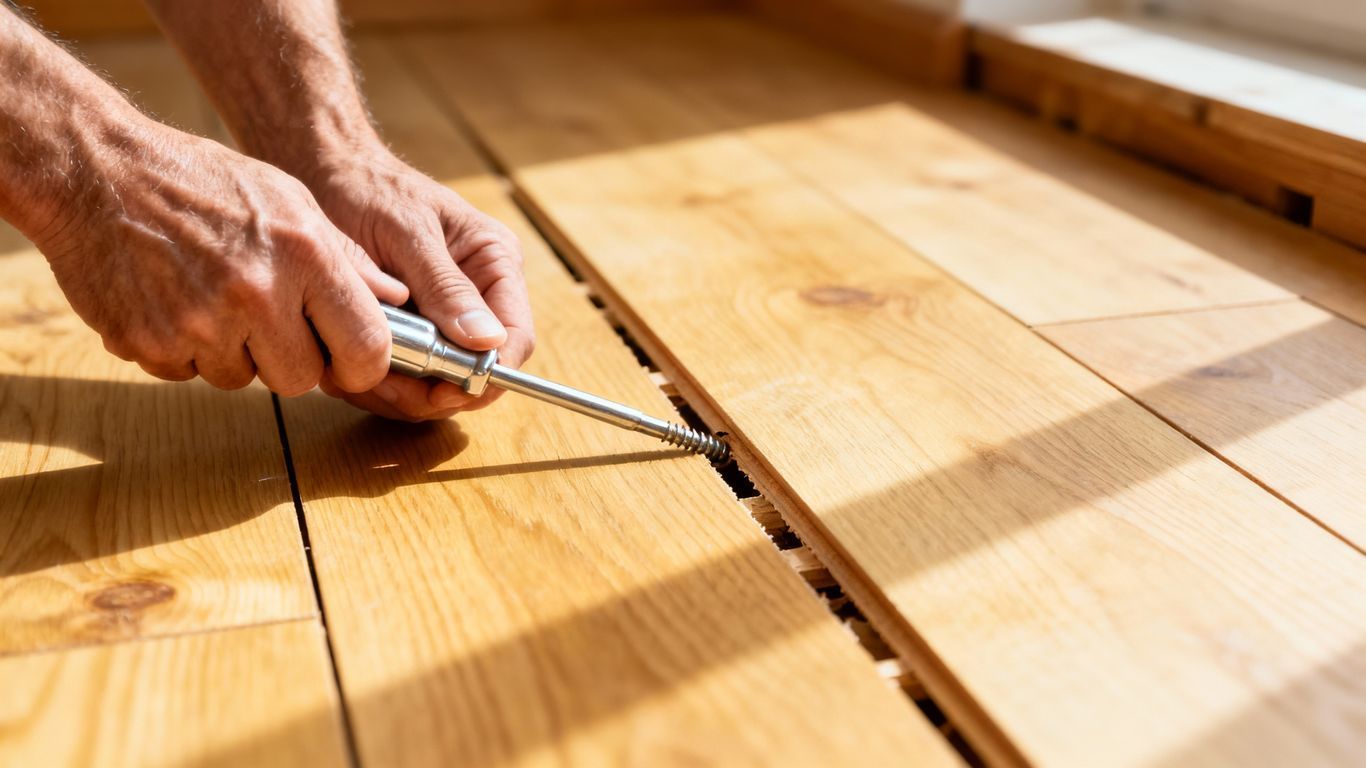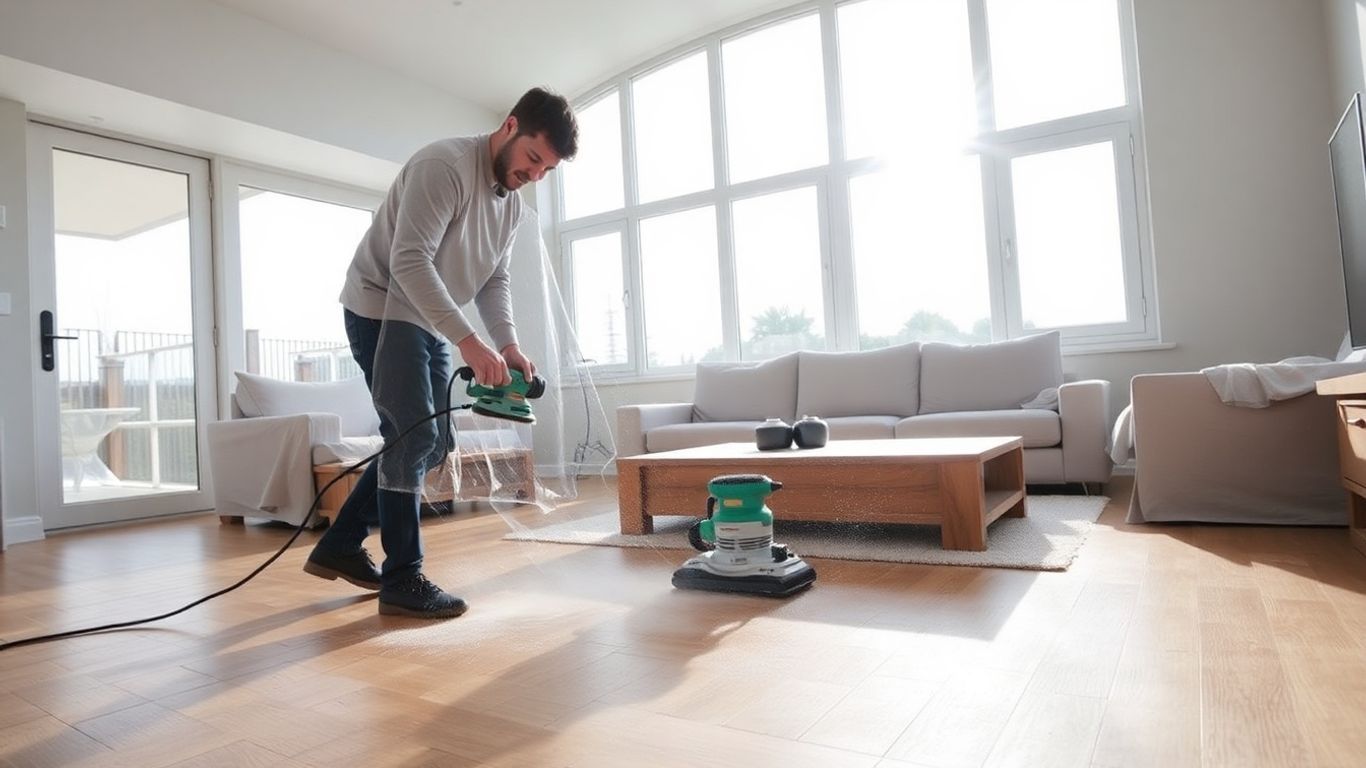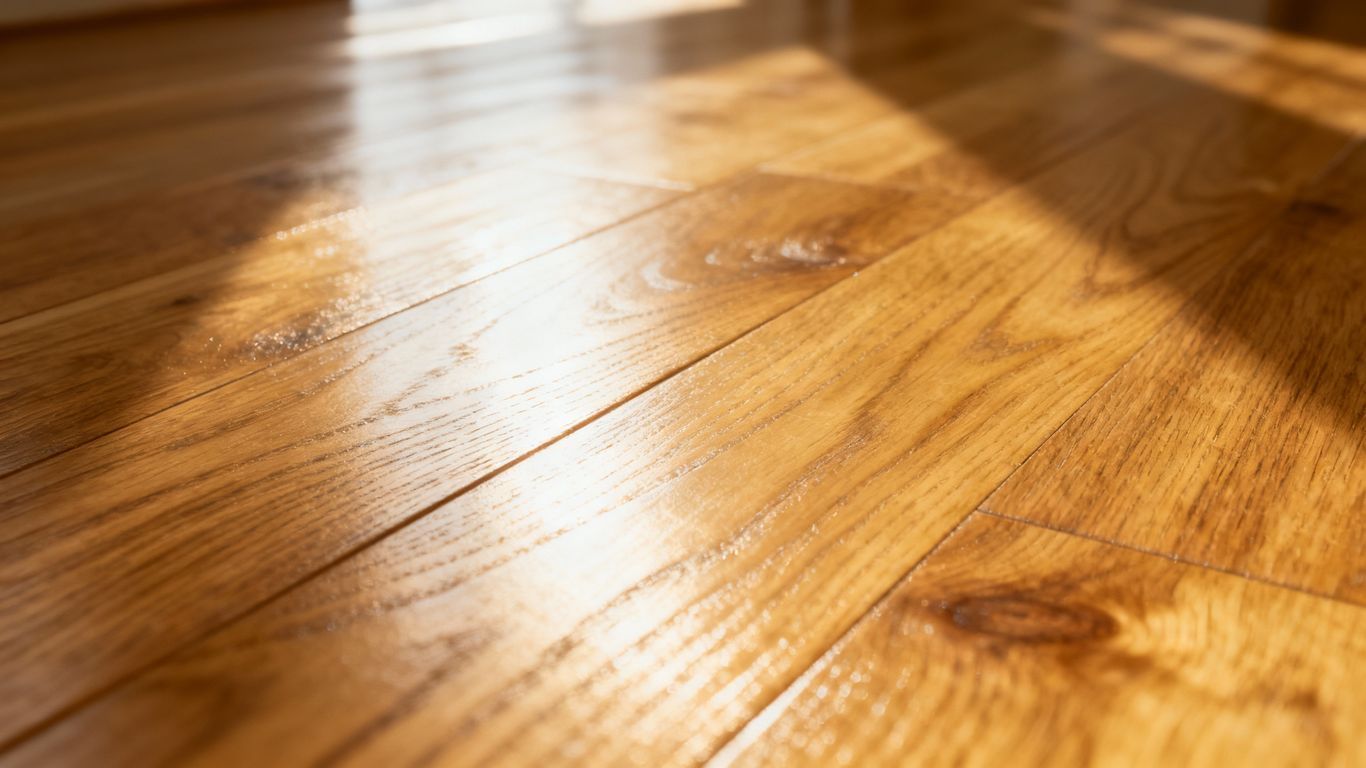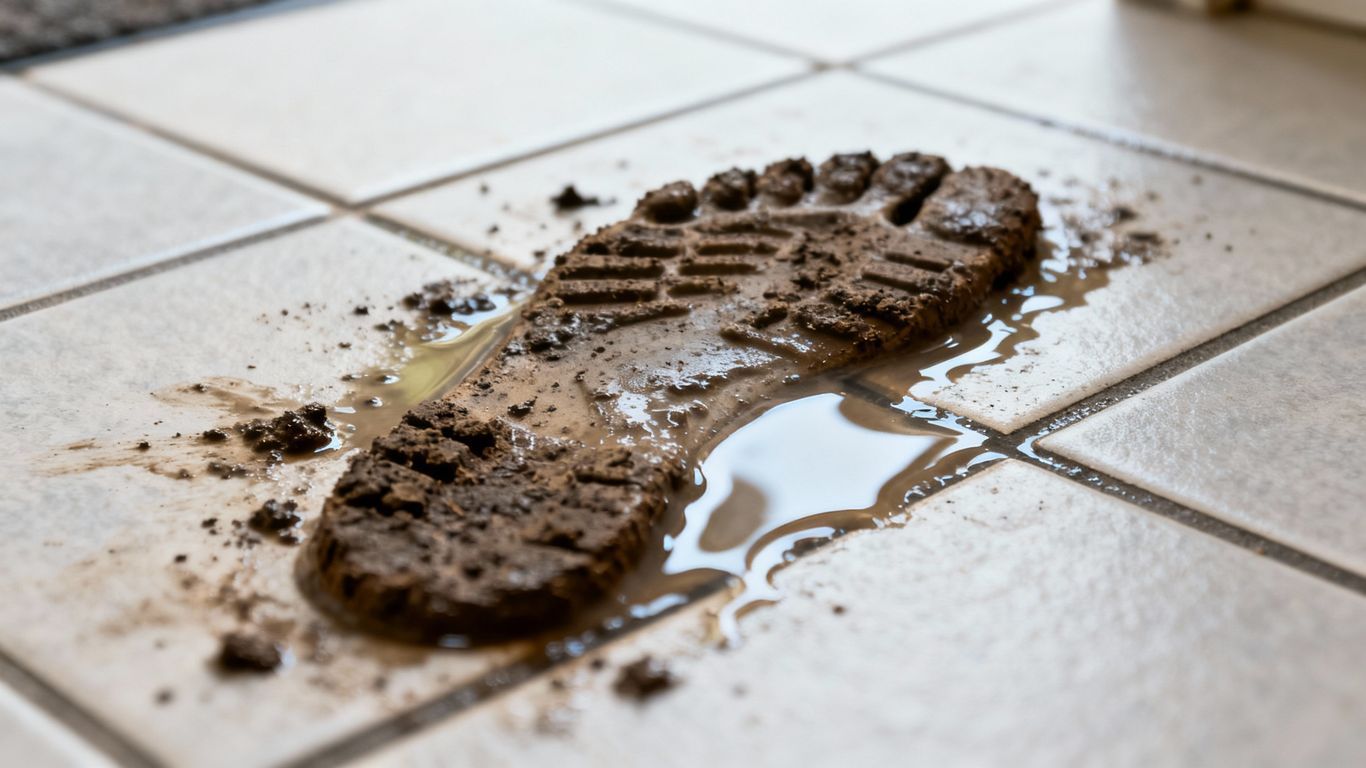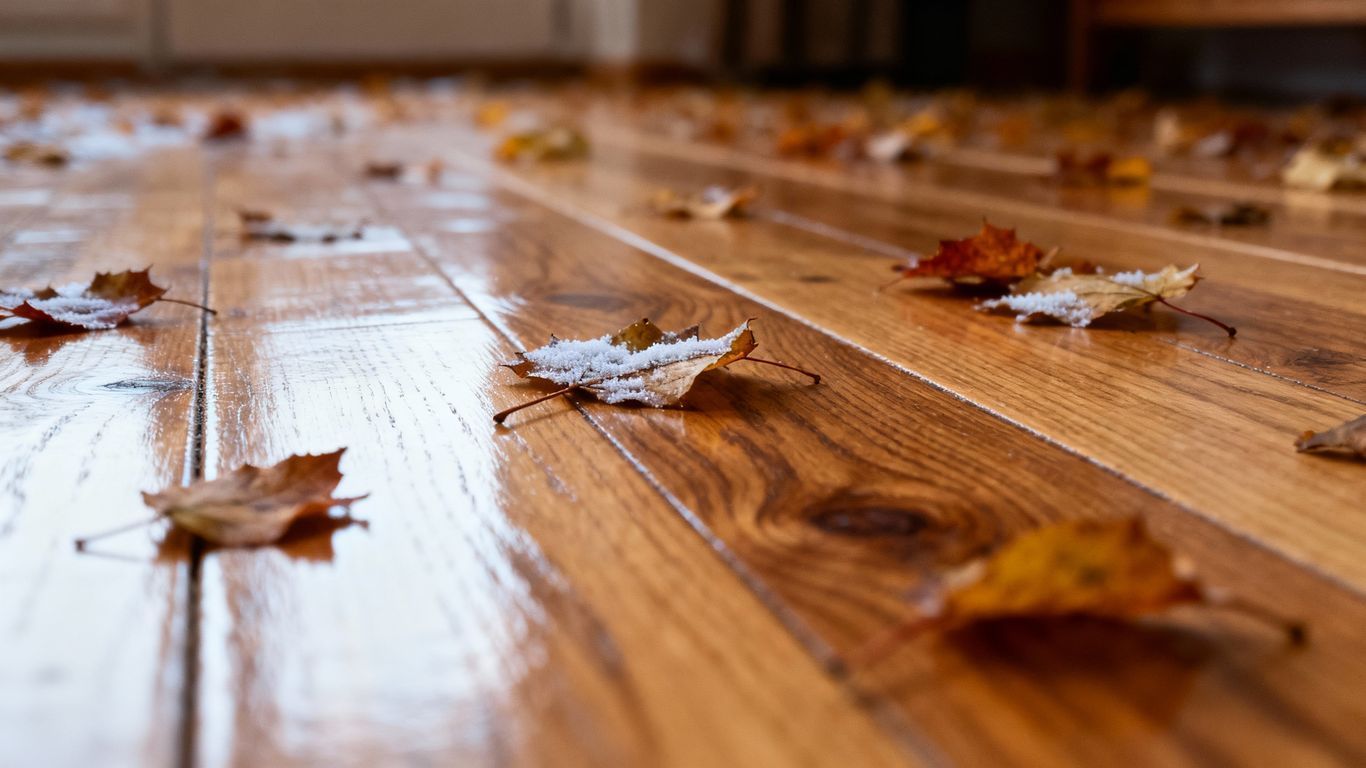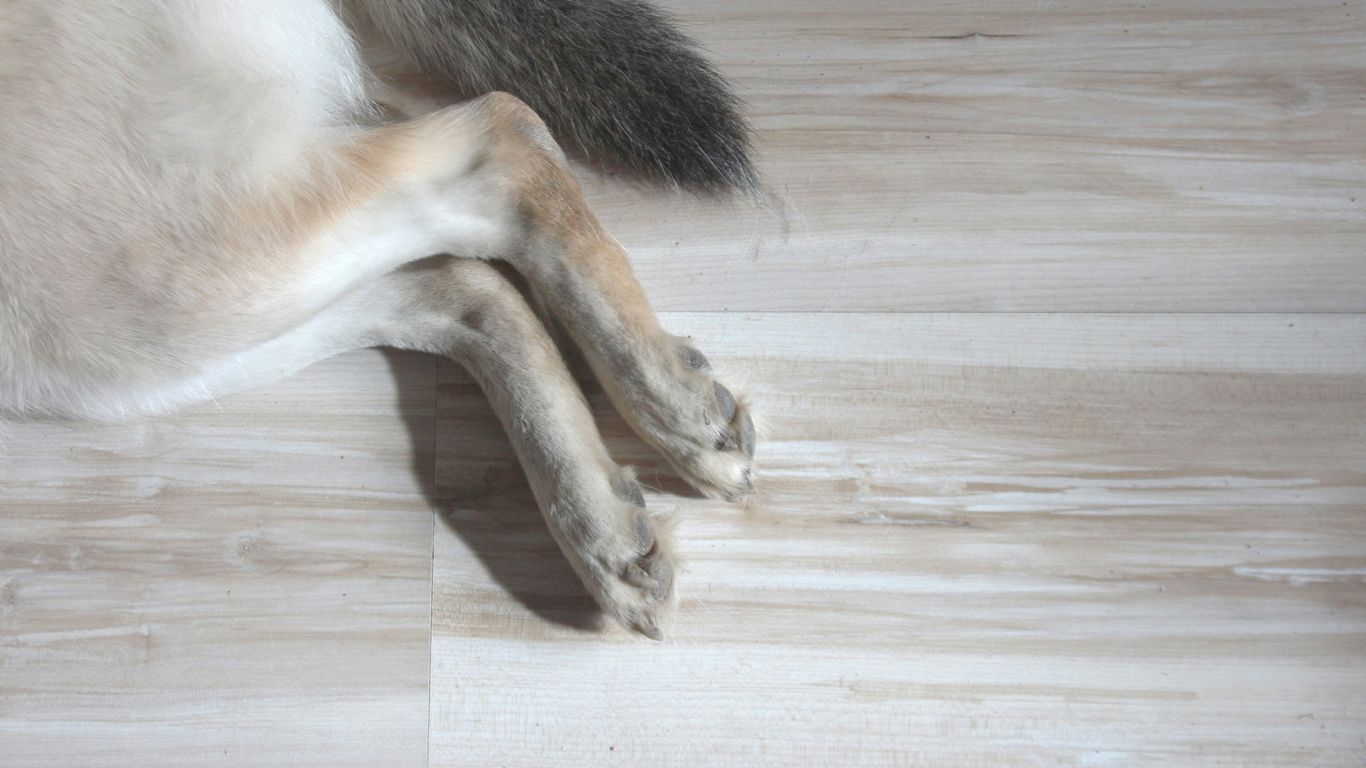How to Maintain Hardwood Floors in Signal Mountain & Lookout Mountain, TN
Owning beautiful hardwood floors in Signal Mountain and Lookout Mountain, TN, is a real treat. But keeping them looking good takes a little effort. This guide will walk you through the simple steps for effective hardwood floor maintenance Signal Mountain residents can use to keep their floors looking great year after year. We'll cover everything from daily care to fixing up those inevitable wear and tear issues.
Key Takeaways
- Sweep or dust your floors daily with a soft broom or microfiber mop to pick up grit.
- Use a cleaner made for hardwood floors and a damp, not wet, mop.
- Put felt pads on furniture legs and use mats at entrances to prevent scratches.
- Fix small scratches quickly; for bigger problems, consider professional help.
- Manage indoor moisture, especially during different seasons, to protect your wood.
Daily Dusting for Pristine Hardwood Floors
Keeping your hardwood floors looking their best doesn't have to be a huge chore. A little bit of attention each day can make a big difference in preventing dullness and wear. Think of it as a quick tidy-up that really pays off.
Gentle Sweeping Techniques
When you sweep, you want to be careful not to scratch the wood. Always use a broom with soft bristles. Avoid those stiff, plastic ones that can leave marks. When you sweep, try to move with the grain of the wood. This helps lift dust and debris more effectively and reduces the chance of scratching. It’s a good idea to sweep in sections, gathering the dust into a pile before you pick it up. This way, you’re not just pushing dirt around.
Microfiber Mop Magic
A microfiber mop is your best friend for daily dusting. These mops are designed to attract and hold dust particles, rather than just scattering them. You don't need any cleaning solutions for this; a dry microfiber mop is usually enough for daily dust removal. Just glide it over the floor. It’s a quick and easy way to keep surfaces clean between deeper cleans. Make sure to rinse or shake out the mop head regularly as you go.
Avoiding Harsh Brushes
This might seem obvious, but it’s worth repeating. Never use abrasive cleaning tools on your hardwood floors. This includes stiff-bristled brushes, steel wool, or anything that could potentially scratch or dull the finish. Even vacuum cleaner attachments can be problematic if they have hard plastic wheels or beater bars that aren't designed for wood. If you use a vacuum, make sure it has a specific setting or attachment for hard floors.
Regular dusting isn't just about looks; it's about protecting the finish. Tiny particles of dirt and grit act like sandpaper underfoot, slowly wearing down the protective layer of your hardwood over time. A quick sweep or mop each day removes these abrasive particles before they can cause damage.
Effective Cleaning Strategies for Your Floors
Keeping your hardwood floors looking good doesn't have to be a huge chore. It's all about using the right methods and products.
Choosing the Right Cleaning Solution
Forget those harsh chemical cleaners you might see advertised. They can really damage the finish on your beautiful wood floors over time. Instead, look for pH-neutral cleaners specifically made for hardwood. You can often find these at your local hardware store or even online. Sometimes, a simple mix of water and a tiny bit of mild dish soap can work in a pinch, but always test it in an inconspicuous spot first. The key is to use a cleaner that won't strip away the protective layer of your floor.
Damp Mopping Best Practices
When it's time to mop, remember the word "damp," not "wet." You don't want to flood your floors. Excess water is the enemy of hardwood.
- Start by sweeping or vacuuming to get rid of loose dirt and grit.
- Dip your mop into the cleaning solution, then wring it out thoroughly. It should feel barely moist to the touch.
- Mop in the direction of the wood grain. Work in small sections.
- Follow up immediately with a dry cloth or mop to pick up any lingering moisture.
Over-wetting can cause the wood to swell, warp, and even lead to mold growth in the long run. It's better to clean more often with less water than to do a deep soak less frequently.
Tackling Spills Immediately
Spills happen, especially if you have kids or pets running around. The most important thing is to clean them up right away. Don't let liquids sit on the floor, even for a few minutes.
- For most spills, a clean, absorbent cloth or paper towel is all you need.
- Gently blot the area to soak up the liquid.
- If there's any residue, use a slightly damp cloth to wipe it clean, then dry the spot immediately.
This simple habit can prevent water stains and damage that are much harder to fix later on.
Protecting Your Investment from Damage
Hardwood floors are beautiful, but they can get damaged if you're not careful. Think of them like a nice piece of furniture; you want to keep them looking good for as long as possible. A little bit of preventative care goes a long way in keeping your floors in top shape.
Furniture Pad Application
Moving furniture around can cause some serious scratches. You know, like when you rearrange the living room or drag a heavy chair across the floor. It’s a common mistake. To stop this, put felt pads or rubber protectors on the bottom of all your furniture legs. This includes chairs, tables, sofas, and even those little decorative stands. Make sure the pads are clean and stuck on well. If they get dirty, they can actually act like sandpaper, which is the opposite of what you want. Check them every few months and replace them if they look worn out or are peeling off.
Entryway Mats Matter
Dirt and grit tracked in from outside are like tiny little knives for your floors. They get ground into the wood with every step. So, having good mats at all your entrances is a really smart move. Use a "walk-off" mat outside to catch the worst of the dirt and debris before people even step inside. Then, have another absorbent mat just inside the door to catch any moisture. This is especially important here in Tennessee with our changing weather. Keep these mats clean too; vacuum them regularly so they don't become a source of dirt themselves.
Pet Paw Protection
If you have pets, you know how their nails can leave little scratches. It's just part of having furry friends. Keep your pet's nails trimmed regularly. This makes a big difference. You can also get little booties for your dog if they'll tolerate them, especially for playtime. Another idea is to use area rugs or runners in high-traffic areas where your pets tend to play or walk the most. This gives them a softer surface to walk on and protects the hardwood underneath.
Taking these simple steps can really help prevent the everyday wear and tear that can make your hardwood floors look dull and scratched over time. It's about being mindful of how things interact with your floors.
Addressing Scratches and Wear
Even with the best care, hardwood floors can pick up a few nicks and scuffs over time. It's just part of living with beautiful wood. The good news is, most of these aren't permanent disasters and can be managed.
Minor Scratch Repair
For those light surface scratches that haven't gone through the finish, you've got a few options. Often, a simple buffing with a soft cloth can make them disappear. For slightly more visible marks, you might try a specialized hardwood floor repair pen or crayon that matches your floor's color. You just fill in the scratch, and then buff away any excess. It's a quick fix that can make a big difference.
- Color-matching repair pens/crayons
- Wood polish or conditioner
- Soft microfiber cloth for buffing
Deep Scratch Solutions
When scratches are deeper, maybe down to the bare wood, you'll need a bit more effort. For small, isolated deep scratches, you can use a wood filler or putty that matches your floor. Apply it carefully with a putty knife, making sure to fill the scratch completely. Let it dry according to the product instructions, then gently sand the area smooth. You might need to touch up the color with a matching stain or paint, and then seal it with a clear coat to protect the repair.
For deeper gouges, it's important to work in thin layers with wood filler. Trying to fill a deep scratch all at once can lead to cracking or an uneven finish. Patience here really pays off.
Professional Refinishing Options
If your floors have seen better days, with widespread scratches, dullness, or wear patterns, it might be time to consider a professional refinishing. This process involves sanding down the entire floor to remove the old finish and any imperfections. Then, a new stain can be applied if desired, followed by several coats of a durable protective finish. It's a more involved process, but it can make your floors look brand new again. It's a great way to completely refresh the look of your home and protect your wood for years to come.
Seasonal Hardwood Floor Maintenance Tips
Keeping your hardwood floors looking good isn't just about the day-to-day stuff; the changing seasons here in Signal Mountain and Lookout Mountain bring their own set of challenges. Paying attention to these seasonal shifts can really make a difference in how long your floors last and how nice they look.
Winter Moisture Control
Winter is often the driest season, but it can also bring moisture issues. As the temperature drops, we tend to crank up the heat indoors, which dries out the air. This can cause hardwood to shrink, potentially leading to gaps between boards. On the flip side, melting snow and ice tracked in on shoes can introduce unwanted moisture. It's important to manage both extremes.
- Control Indoor Humidity: Use a humidifier to keep indoor humidity levels between 35-55%. This helps prevent excessive shrinking or swelling.
- Wipe Up Moisture Promptly: Keep a mat at every entrance to catch snow and water. Wipe up any spills or tracked-in moisture immediately with a dry or slightly damp cloth.
- Avoid Wet Mopping: Never use a soaking wet mop on your hardwood floors during winter. Water can seep into the wood and cause damage.
During winter, the air inside your home can become very dry due to heating systems. This dryness can cause your hardwood floors to contract, potentially opening up small gaps between the planks. It's a natural process, but one that can be managed with a little care.
Summer Humidity Management
Summers in Tennessee can be quite humid. High humidity causes hardwood to absorb moisture and expand. This expansion can lead to boards pushing against each other, potentially causing buckling or cupping. Proper ventilation and air conditioning are your best friends here.
- Use Air Conditioning: Running your AC helps to dehumidify the air inside your home.
- Consider a Dehumidifier: If you live in a particularly damp area or notice condensation, a dehumidifier can be a great help in maintaining optimal humidity levels, similar to how they help with tile floors.
- Ensure Good Airflow: Keep interior doors open and use fans to circulate air, preventing moisture buildup in specific areas.
Fall Debris Prevention
As leaves start to fall, they can bring dirt, grit, and moisture onto your floors. This debris can act like sandpaper underfoot, scratching the finish over time. It's also a prime time for tracking in dampness from fallen leaves.
- Entryway Mats: Place sturdy mats both outside and inside all entry doors. This is your first line of defense against dirt and moisture.
- Regular Sweeping/Vacuuming: Increase the frequency of sweeping or vacuuming with a soft brush attachment to remove fallen leaves and grit before they can cause damage.
- Clean Shoes: Encourage family and guests to remove shoes at the door, especially after walking through damp leaves.
Understanding Your Finish Type
Knowing what kind of finish is on your hardwood floors is a big deal when it comes to keeping them looking good. Different finishes need different care, and using the wrong cleaner can actually do more harm than good. It’s like trying to wash a wool sweater with bleach – not a good idea.
Polyurethane Finish Care
Most modern hardwood floors have a polyurethane finish, which is pretty tough. It sits on top of the wood, creating a protective layer. Because of this, you don't need special cleaners. A simple mix of water and a little bit of pH-neutral soap is usually all you need. Just make sure your mop is only damp, not soaking wet. Too much water can seep into the wood around the finish and cause problems over time.
- Sweep or vacuum regularly to pick up grit.
- Use a damp mop with a mild cleaner.
- Dry any standing water immediately.
Wax Finish Maintenance
Floors with a wax finish are a bit more sensitive. These finishes are softer and can be damaged by harsh chemicals or too much water. You'll want to stick to cleaners specifically made for waxed wood floors. Buffing is also important here; it helps to keep the shine and protect the wax layer. If you notice dull spots, a fresh coat of wax might be in order. It’s a bit more hands-on, but the look is often worth it for many homeowners.
Wax finishes require a gentle touch. Avoid abrasive cleaners and excessive moisture to prevent damage and maintain the floor's natural beauty.
Oil Finish Considerations
Oil finishes penetrate the wood, rather than sitting on top like polyurethane. This means they offer a more natural look and feel. However, they also need specific care. You'll typically use special wood soaps designed for oiled floors. These soaps clean without stripping away the oil. Regular re-oiling might be necessary to keep the wood protected and looking its best. If you're unsure about your floor's finish, it's always a good idea to check with the installer or a local flooring professional for advice.
Choosing the right finish for your floors is super important. It affects how they look and how easy they are to care for. We can help you figure out which finish is best for your home. Want to learn more about different floor finishes? Visit our website today!
Keeping Your Floors Looking Great
So, there you have it. Taking care of your hardwood floors here in Signal Mountain and Lookout Mountain doesn't have to be a huge chore. A little regular sweeping or vacuuming, a damp mop now and then, and being mindful of spills makes a big difference. Plus, knowing what products to use and what to avoid means you won't accidentally damage that beautiful wood. Your floors will stay looking nice for years to come, and honestly, that's a win-win for everyone.
Frequently Asked Questions
How often should I dust my hardwood floors?
It's a good idea to give your floors a quick sweep or dust every day, especially in busy areas. This stops dirt and grit from scratching the wood.
What's the best way to clean my hardwood floors?
Use a damp mop, not a soaking wet one. You can use a special cleaner made for wood floors or just a little bit of mild soap mixed with water. Always wring out the mop well so it's just barely wet.
How can I stop scratches on my floors?
Put felt pads on the bottom of furniture legs, like chairs and tables. Also, use doormats at entrances to catch dirt and rocks before they get tracked inside.
What if I find a scratch on my floor?
For tiny scratches, sometimes a special wood crayon or repair marker can hide them. For deeper ones, you might need a repair kit or to call a pro to fix it up.
How does the weather affect my wood floors?
Too much moisture, like from snow or rain tracked in, can harm wood. In dry weather, the wood can shrink. Try to control the dampness and dryness in your home to keep the floors happy.
Do I need to know what kind of finish my floor has?
Yes, knowing the finish helps a lot! Different finishes, like polyurethane, wax, or oil, need different cleaning and care. Check with the manufacturer or a flooring expert if you're not sure.
